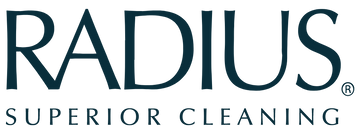Oral Care Myths Debunked: Separating Fact from Fiction for Better Dental Health
Apr 15, 2024
Maintaining good oral health is essential for a healthy smile and overall well-being. However, with so much information available, it can be challenging to separate fact from fiction when it comes to oral care. In this blog post, we'll debunk some common oral care myths to help you make informed decisions about your dental health.
Myth 1: You Only Need to Brush Once a Day
Fact: Brushing your teeth at least twice a day is essential for removing plaque and bacteria that can lead to tooth decay and gum disease. Brushing in the morning helps freshen your breath and remove bacteria that have accumulated overnight, while brushing before bed removes plaque and food particles that can cause problems while you sleep.
Myth 2: Harder Toothbrushes Clean Better
Fact: Using a hard-bristled toothbrush can actually be harmful to your teeth and gums. Hard bristles can wear down tooth enamel and irritate the gums, leading to sensitivity and gum recession. It's best to use a soft-bristled toothbrush, which is gentle on your teeth and gums while still effectively removing plaque and debris.
Myth 3: Flossing Isn't Necessary
Fact: Flossing is an essential part of any oral care routine. Brushing alone cannot effectively clean between the teeth and along the gumline, where plaque and food particles can accumulate. Flossing helps remove this debris, reducing the risk of cavities and gum disease. Make sure to floss at least once a day, preferably before brushing your teeth.
Myth 4: You Should Rinse Your Mouth Immediately After Brushing
Fact: Rinsing your mouth with water immediately after brushing can actually wash away the fluoride in your toothpaste, reducing its effectiveness. Instead, spit out the excess toothpaste after brushing, but don't rinse your mouth with water. This allows the fluoride to remain on your teeth, providing additional protection against cavities.
Myth 5: Sugar-Free Gum is Just as Good as Brushing
Fact: While sugar-free gum can help stimulate saliva production, which can help neutralize acids and wash away food particles, it is not a substitute for brushing and flossing. Chewing gum should be seen as a complement to your oral care routine, not a replacement. Brushing and flossing remain the most effective ways to remove plaque and maintain good oral health.
Myth 6: You Should Brush Immediately After Eating
Fact: Brushing immediately after eating, especially if you've consumed acidic foods or drinks, can actually damage your teeth. Acidic foods and drinks weaken tooth enamel, and brushing right away can wear down the enamel further. Instead, wait at least 30 minutes after eating before brushing your teeth to allow your saliva to neutralize acids and remineralize your enamel.
Myth 7: If Your Gums Bleed When You Brush, You Should Stop Brushing
Fact: Bleeding gums are often a sign of gum disease, which is caused by plaque buildup along the gumline. If your gums bleed when you brush or floss, it's essential to continue brushing and flossing gently. Consistent oral care can help remove plaque and bacteria, reducing inflammation and bleeding over time. However, if bleeding persists, be sure to see your dentist for a professional evaluation and treatment.
Myth 8: You Don't Need to Visit the Dentist If Your Teeth Look Fine
Fact: Even if your teeth look fine, regular dental checkups are essential for maintaining good oral health. Your dentist can identify potential issues early on, such as cavities, gum disease, or oral cancer, and provide personalized recommendations for preventing and treating these problems. Regular dental visits can save you time, money, and discomfort in the long run by addressing issues before they become more serious.
Conclusion
There are many myths and misconceptions surrounding oral care, but by separating fact from fiction, you can make informed decisions about your dental health. Remember to brush your teeth at least twice a day with a soft-bristled toothbrush, floss daily, and visit your dentist regularly for checkups and cleanings. By following these simple steps and debunking common oral care myths, you can enjoy a healthy smile for years to come.

